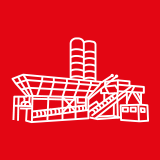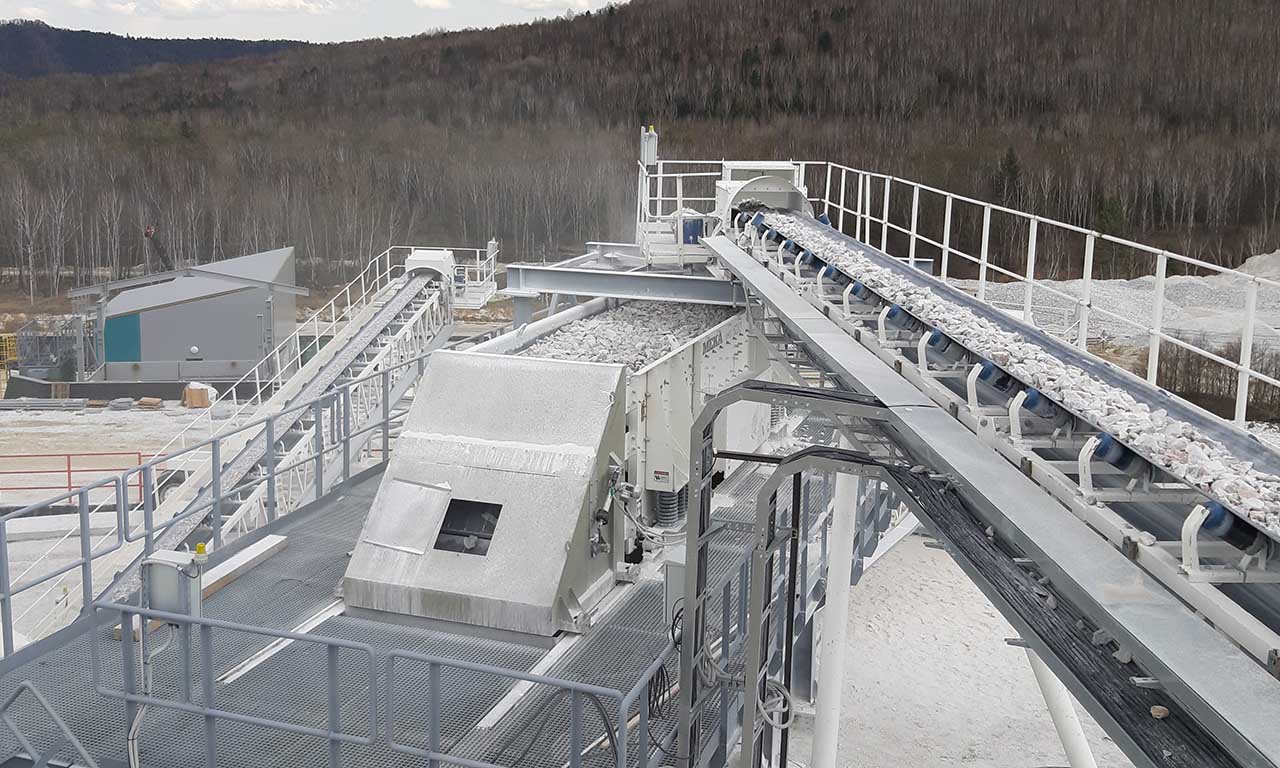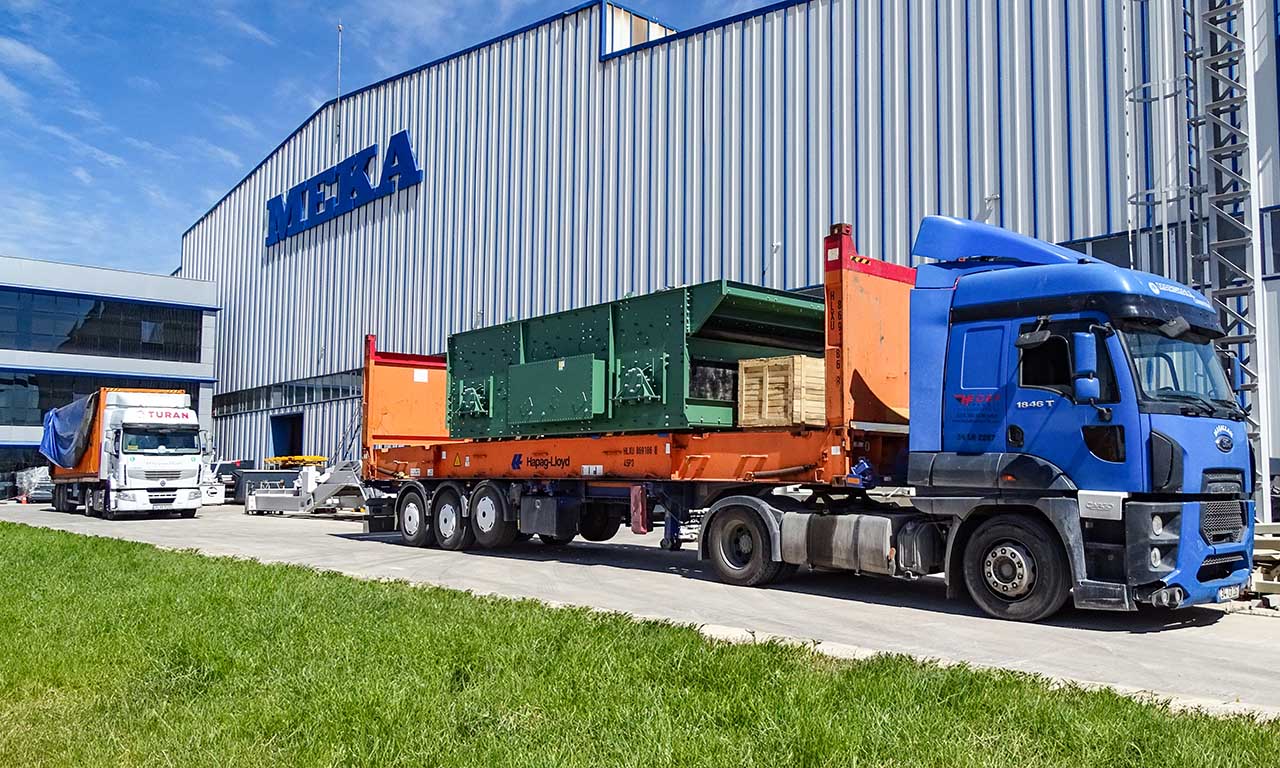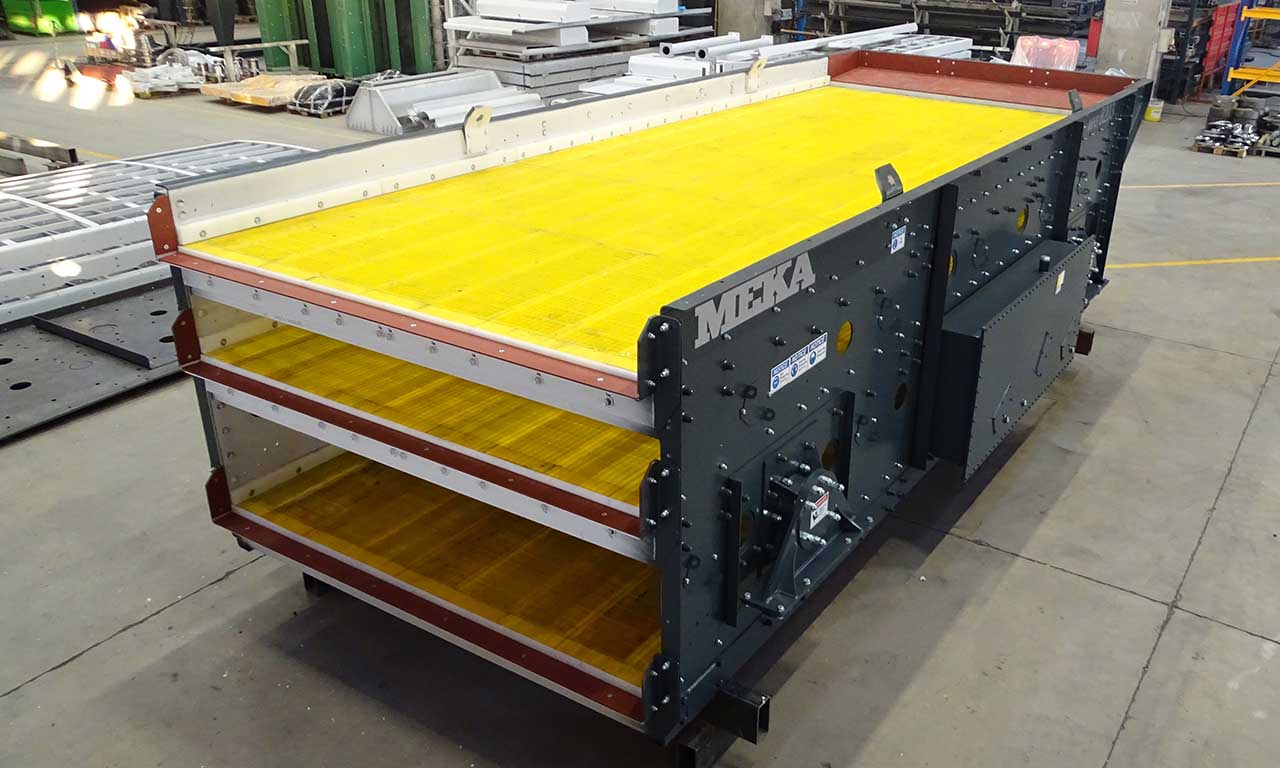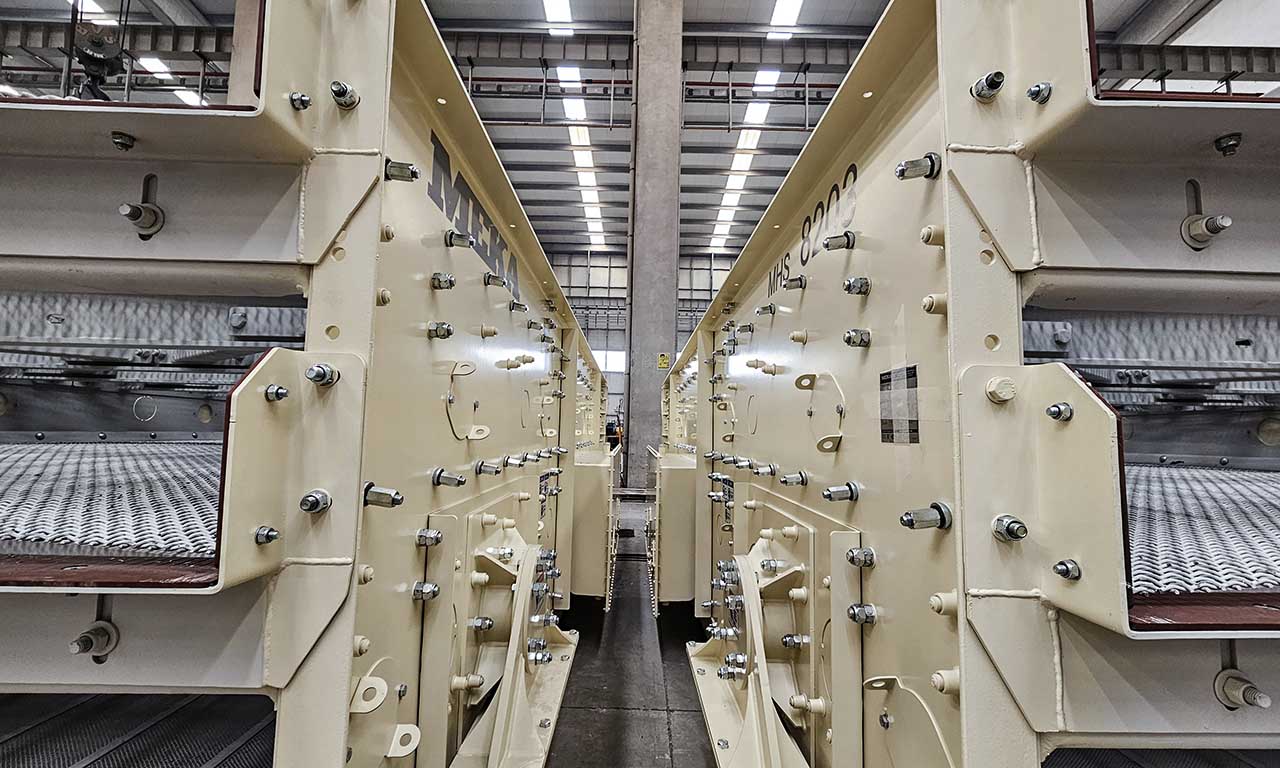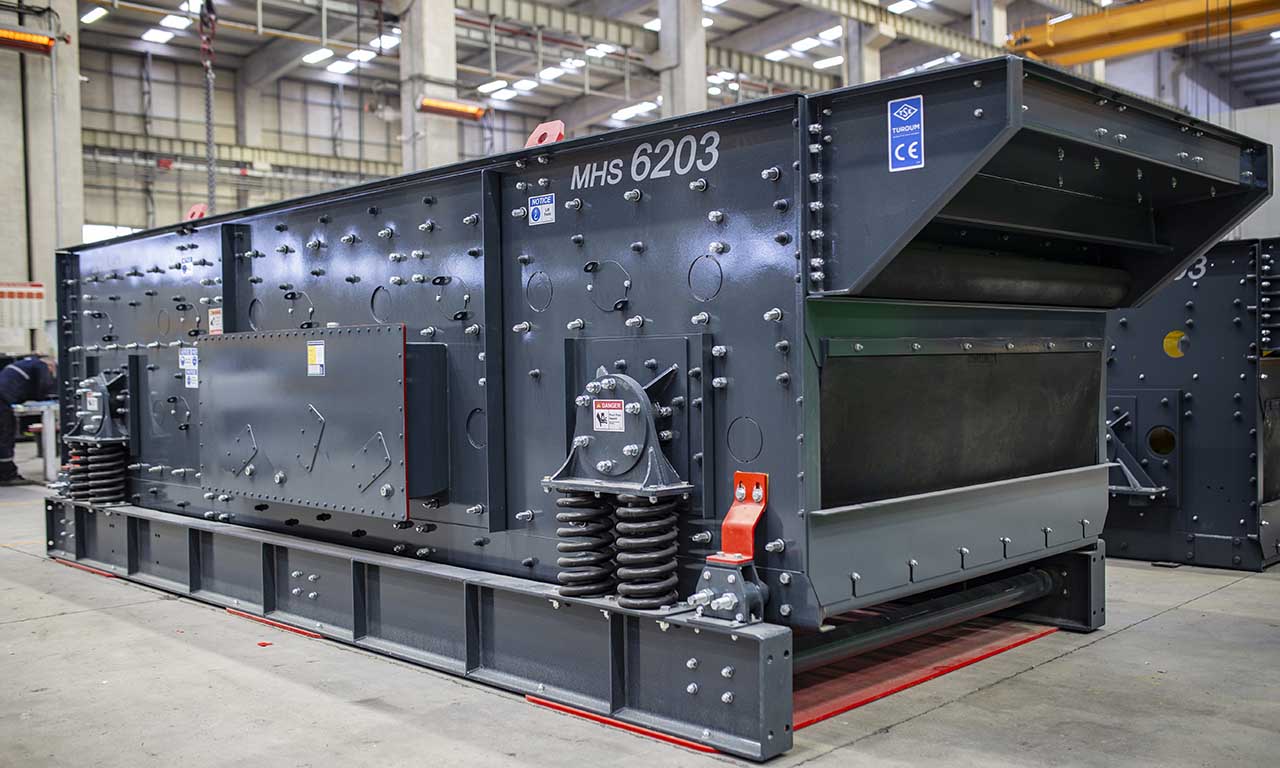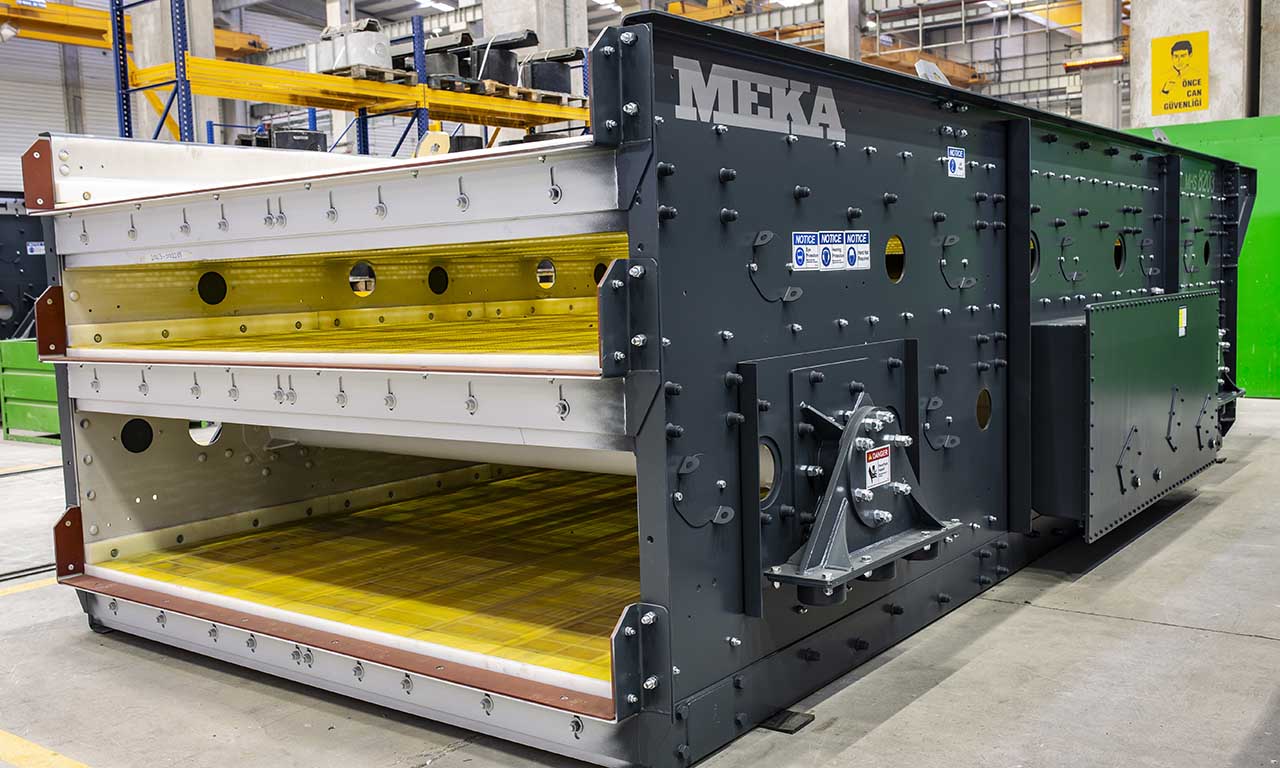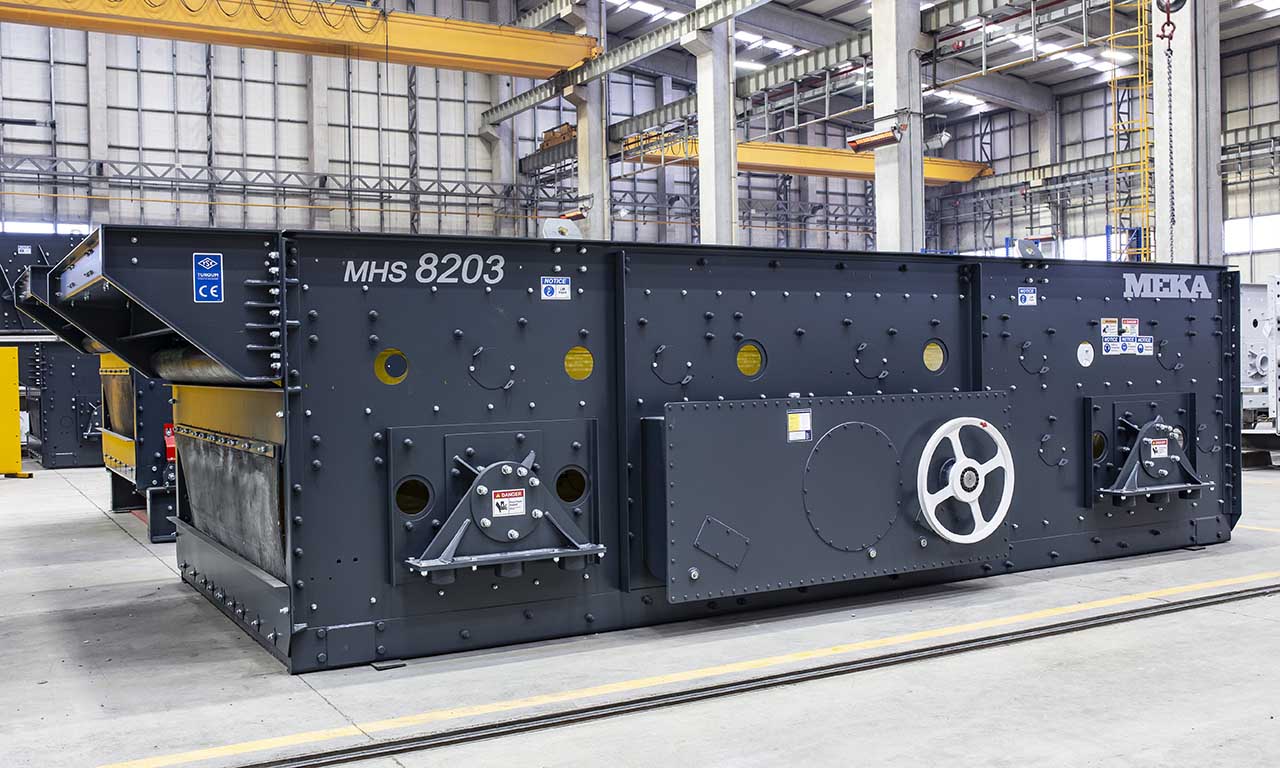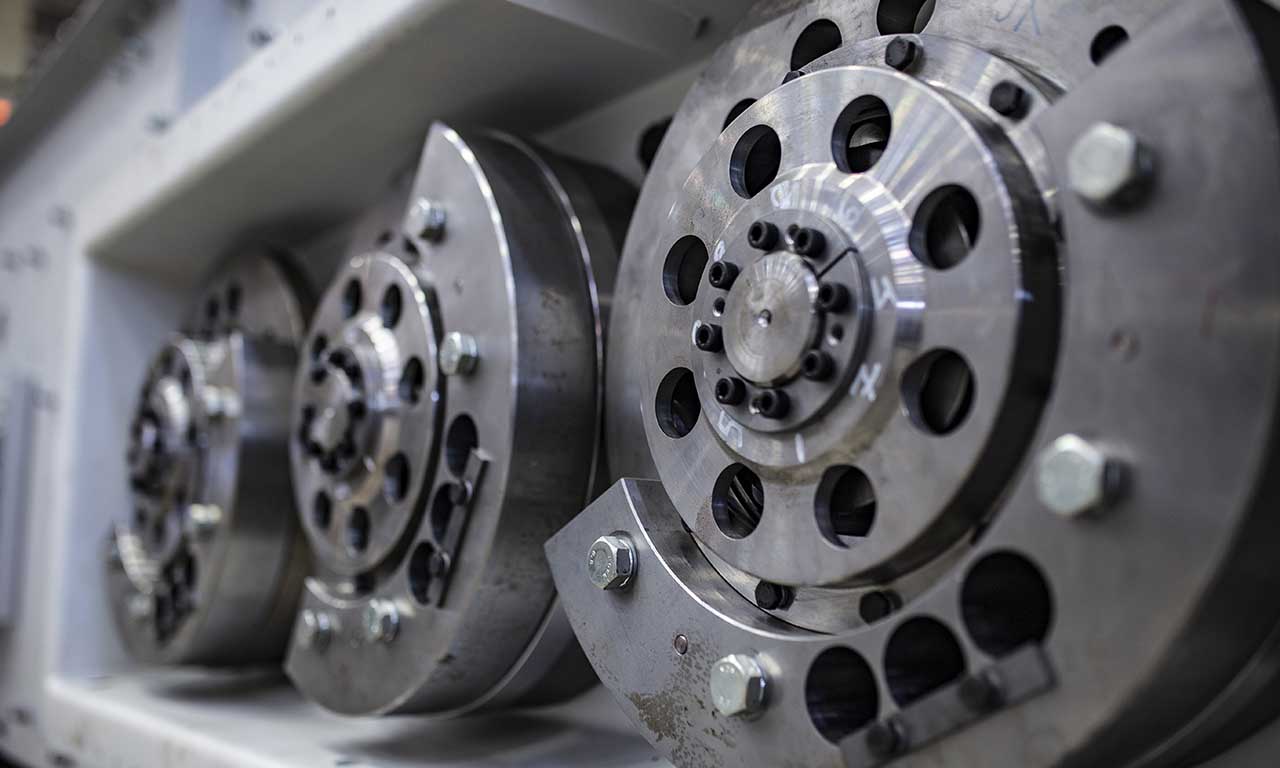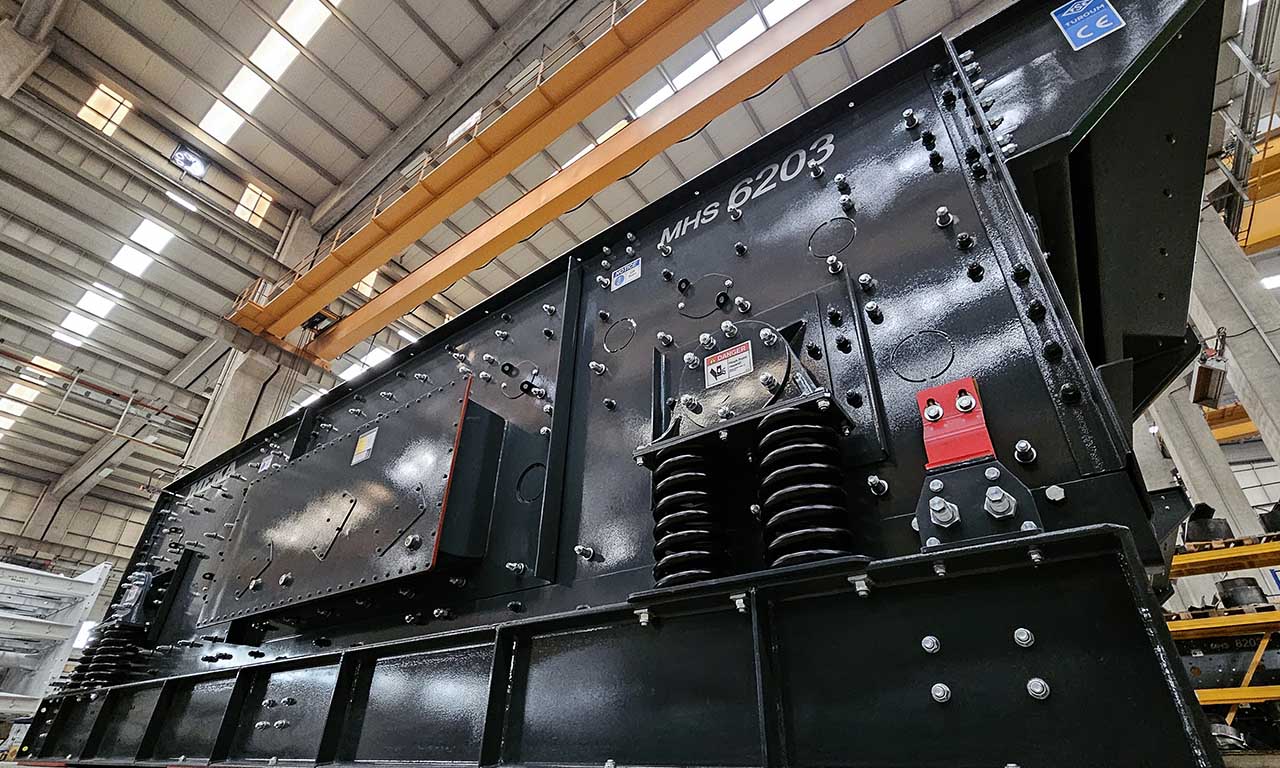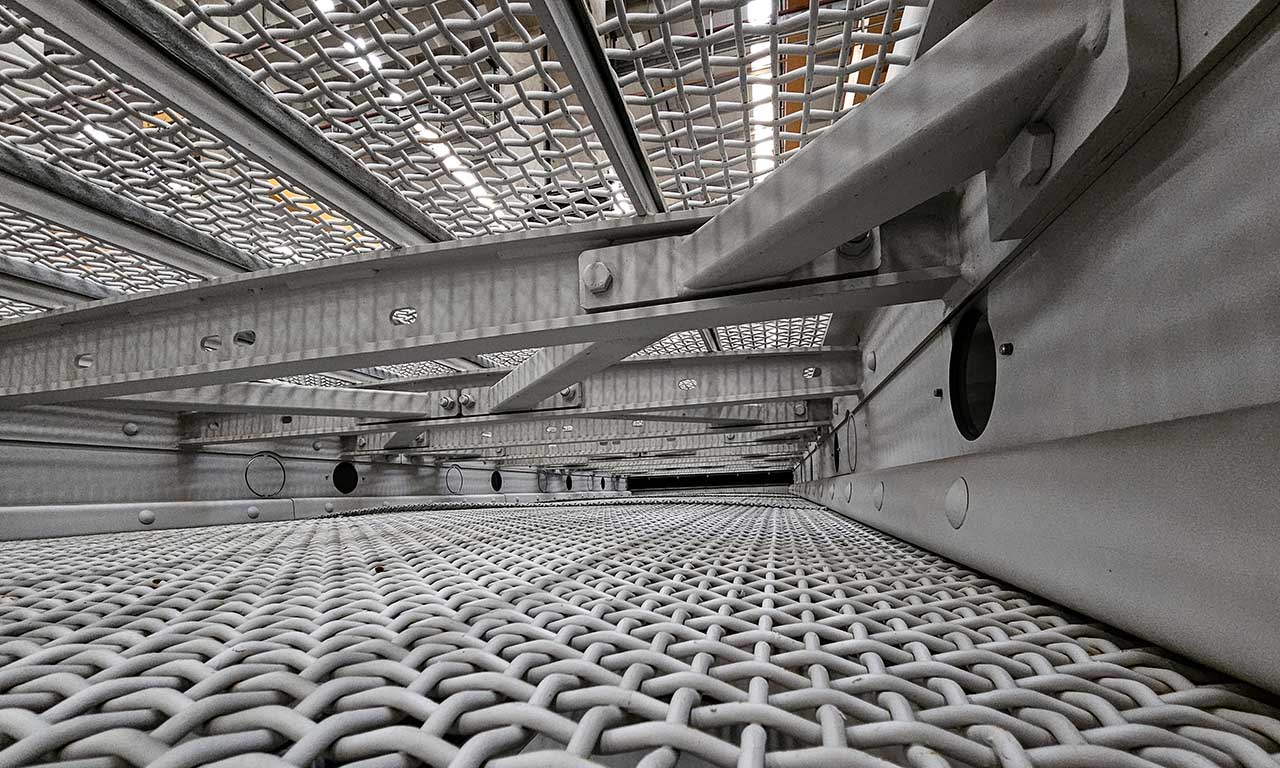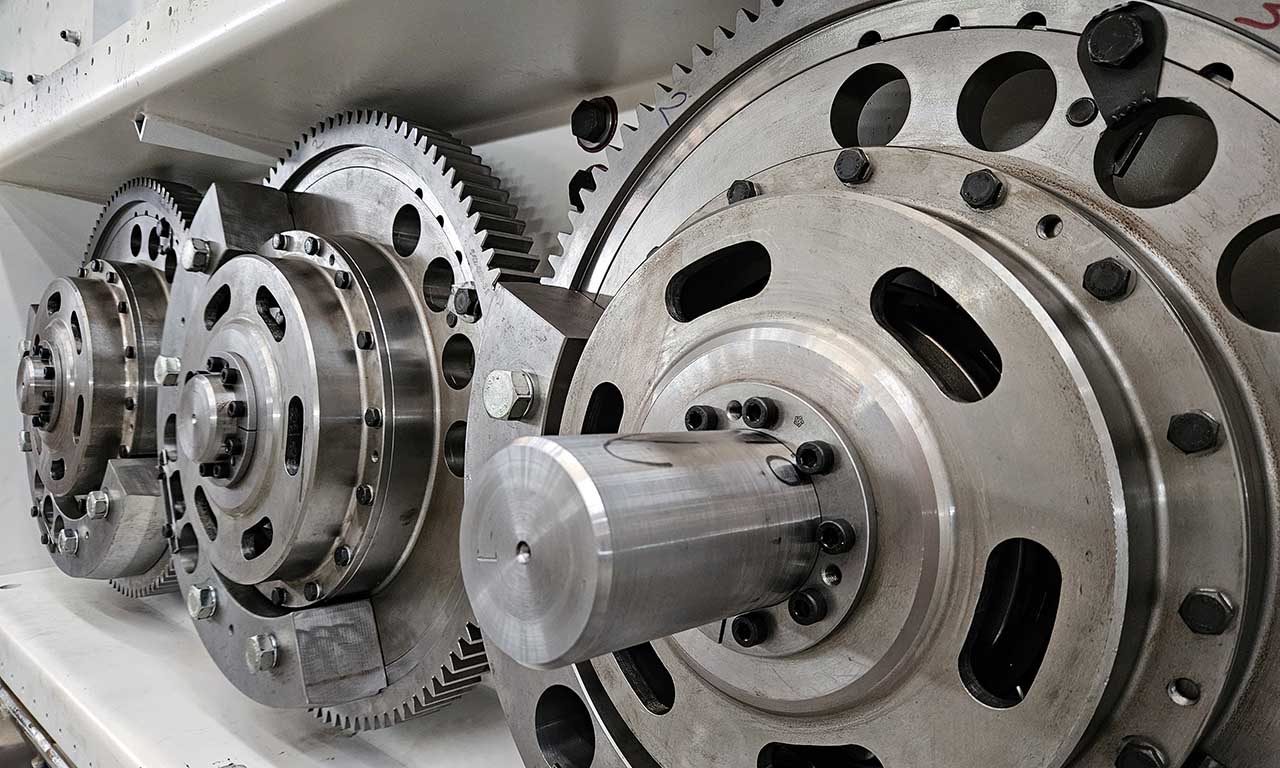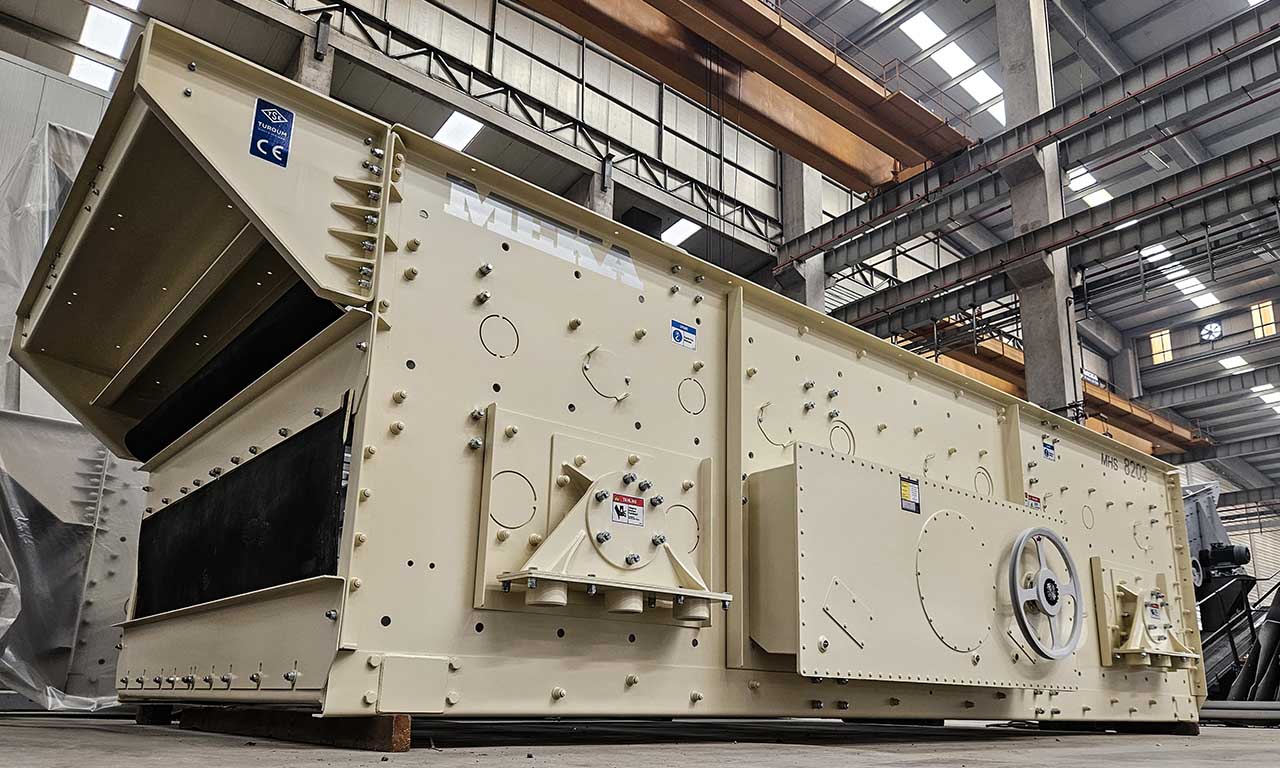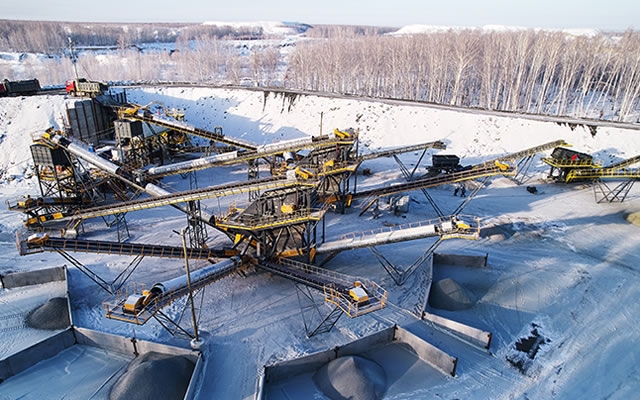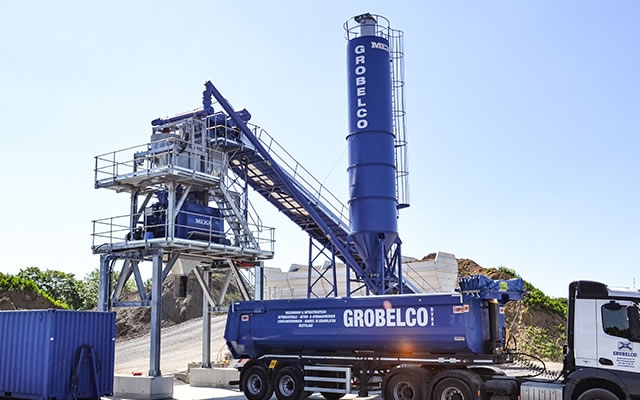Yatay elekler, malzemeyi elek yüzeyi boyunca hızlandırmak ve hareket ettirmek için 3 milli titreşim mekanizması tarafından üretilen eliptik hareketleri kullanır.
Yatay Elekler
MHS Serisi
Yatay Elekler
Yatay Elekler (MHS) kalite, güvenilirlik ve performansın bir kombinasyonudur; en zorlu uygulamalarda çalışırken uzun bir hizmet ömrü sağlar. Kanıtlanmış eliptik strok tasarımı üretimi artırır, geri dönüş yükünü azaltır.
Eliptik atış hareketi, MEKA yatay eleklerini neredeyse tıkanmaz hale getirir ve eleme verimini artırır. Strok açısını, genliğini ve hızını hassas ayarlama yeteneği, değişen eleme koşullarını karşılamada çok yönlülük sağlar. Ekstra güçlü gövde yapısı, dayanıklı yatak bağlantıları, yüksek mukavemetli dişli seti ve huck bolt bağlantı sistemleri hizmet ömrünü uzatır.
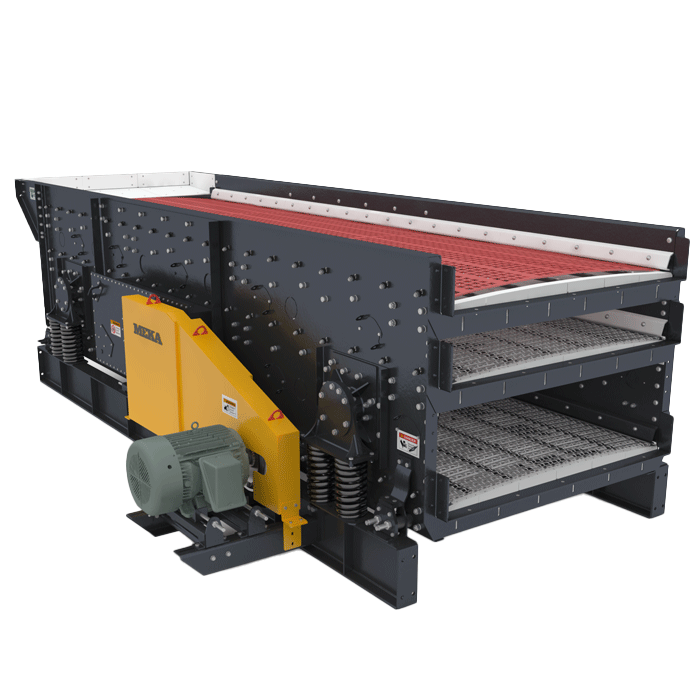
Uygulamalar
Yatay elekler (MHS) tüm eleme uygulamaları için üstün performans sağlar ve madencilik, agrega, beton ve asfalt geri dönüşümünde yaygın olarak kullanılmaktadır. Yatay elekler için özel uygulamalar şunları içerir; eleme verimliliğinin öne çıktığı, ince eleme, ıslak eleme ve yüksekliğin kritik olduğu mobil eleme üniteleridir.
Neden MEKA Yatay Elekleri?
- Üç Milli Bir Mekanizmayla Eliptik Hareket
- Eliptik bir hareket modeli kullanan yapı, tıkanmayı ve sıvanmayı azaltmak için daha agresif bir eleme özelliği oluşturur.
- Düşük Bakım Gereksinimi
- Dahili bir yağ banyosuna sahip yağlama sistemi ile rulmanlar ve dişliler yağ içinde çalışmaktadır bu sayede daha az bakım maliyeti oluşturur.
- Her Koşula Uygun Hassas Ayarlama Özelliği
- Strok genliği, vuruntu açısı ve elek hızını değiştirebilme özelliği ile MHS Elek'in neredeyse her koşulda üretimi en üst düzeye çıkarmak için hassas ayar yapılmasına olanak tanır.
- Tüm elek yüzeylerinin kullanımına uyum sağlayan kat tasarımı
- Yatay Eleklerde, çelik tel, tıkanmaz tel, kauçuk, modüler poliüretan, gergili poliüretan, delikli sac gibi elek yüzeyleri kullanılabilir.
Yatay Elekler Teknik Özellikler
MHS 5162 |
MHS 5163 |
MHS 6162 |
MHS 6163 |
MHS 6202 |
MHS 6203 |
MHS 7202 |
MHS 7203 |
MHS 8202 |
MHS 8203 |
|
| Ağır Hizmet Modeli Ağır Hizmet Modeli | Mevcut Mevcut | Mevcut Mevcut | Mevcut Mevcut | Mevcut Mevcut | Mevcut Mevcut | Mevcut Mevcut | Mevcut Mevcut | Mevcut Mevcut | Mevcut Mevcut | Mevcut Mevcut |
| Genişlik x Uzunluk (mm) Genişlik x Uzunluk (inch) | 1562x4877 61,5x192 | 1562x4877 61,5x192 | 1930x4877 76x192 | 1930x4877 76x192 | 1930x6096 76x240 | 1930x6096 76x240 | 2235x6096 88x240 | 2235x6096 88x240 | 2540x6096 100x240 | 2540x6096 100x240 |
| Güverte Sayısı Güverte Sayısı | 2 2 | 3 3 | 2 2 | 3 3 | 2 2 | 3 3 | 2 2 | 3 3 | 2 2 | 3 3 |
| Güç (kW) Güç (HP) | 22 30 | 30 40 | 30 40 | 30 40 | 30 40 | 30 40 | 37 50 | 37 50 | 37 50 | 37 50 |
| Kasnak (Elek) (mm) Kasnak (Elek) (inch) | Ø620 Ø24,4 | Ø620 Ø24,4 | Ø620 Ø24,4 | Ø620 Ø24,4 | Ø620 Ø24,4 | Ø620 Ø24,4 | Ø620 Ø24,4 | Ø620 Ø24,4 | Ø620 Ø24,4 | Ø620 Ø24,4 |
| Kasnak (Motor) (mm) Kasnak (Motor) (inch) | Ø306-Ø365 Ø12-Ø14,3 | Ø306-Ø365 Ø12-Ø14,3 | Ø306-Ø365 Ø12-Ø14,3 | Ø306-Ø365 Ø12-Ø14,3 | Ø306-Ø365 Ø12-Ø14,3 | Ø306-Ø365 Ø12-Ø14,3 | Ø306-Ø365 Ø12-Ø14,3 | Ø306-Ø365 Ø12-Ø14,3 | Ø306-Ø365 Ø12-Ø14,3 | Ø306-Ø365 Ø12-Ø14,3 |
| Hız (rpm) Hız (rpm) | 730-870 730-870 | 730-870 730-870 | 730-870 730-870 | 730-870 730-870 | 730-870 730-870 | 730-870 730-870 | 730-870 730-870 | 730-870 730-870 | 730-870 730-870 | 730-870 730-870 |
| **Ağırlık (kg) **Ağırlık (lbs) | 7496 16525,8 | 8781 19359 | 7781 17154 | 9275 20448 | 9085 20028 | 10788 23783 | 12000 26455,47 | 13500 29762,4 | 12162 26813 | 14267 31453 |
* Rpm 1500 rpm motor için verilmiştir.
** Gösterilen ağırlıklara tahrik motoru paketi, destek ayakları, bakım platformu, giriş ve çıkış olukları dahil değildir.
-
MEKA Yatay Elekler Kataloğunu İndirin
MEKA Yatay Eleklerinin Üstünlükleri

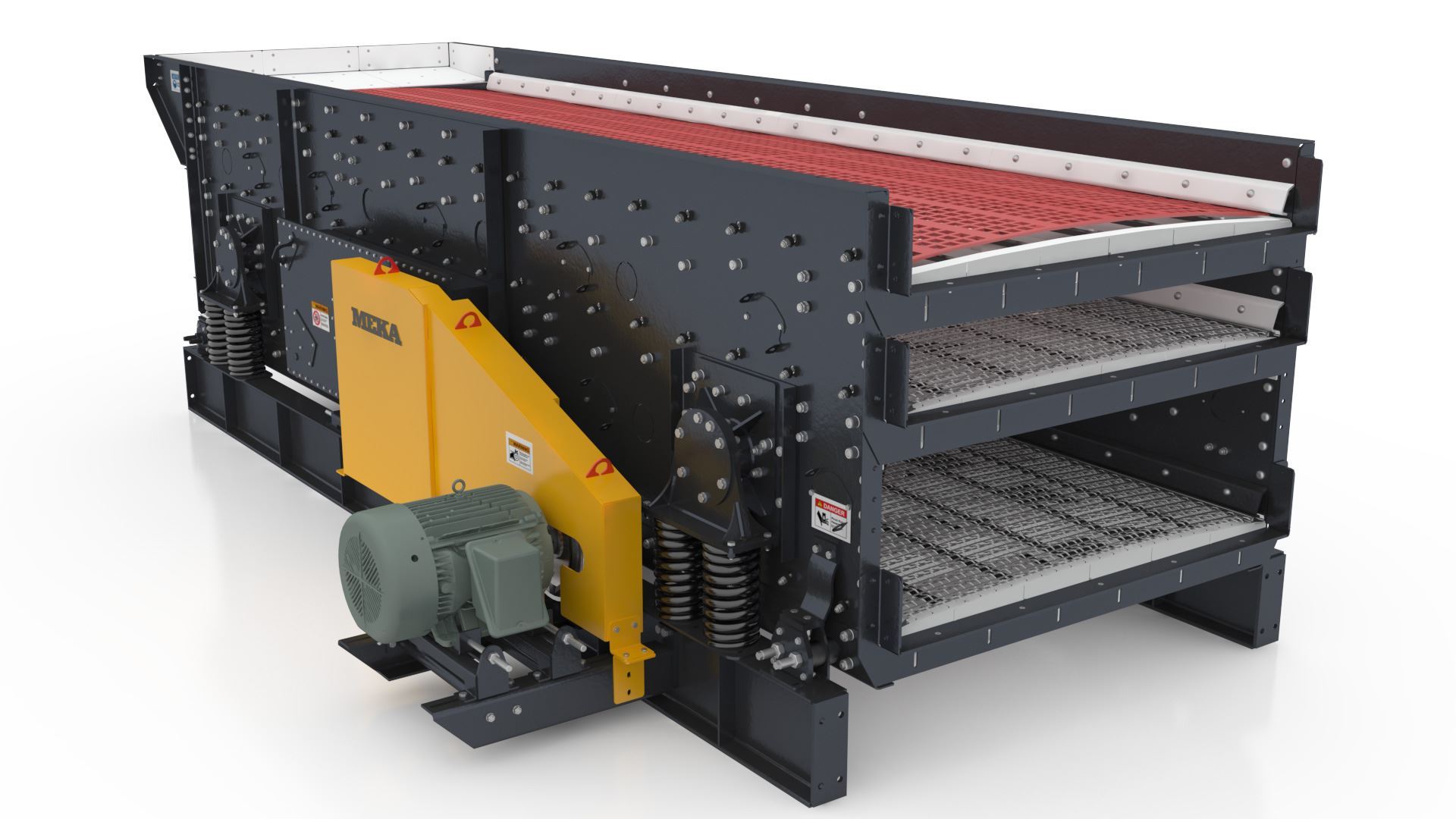
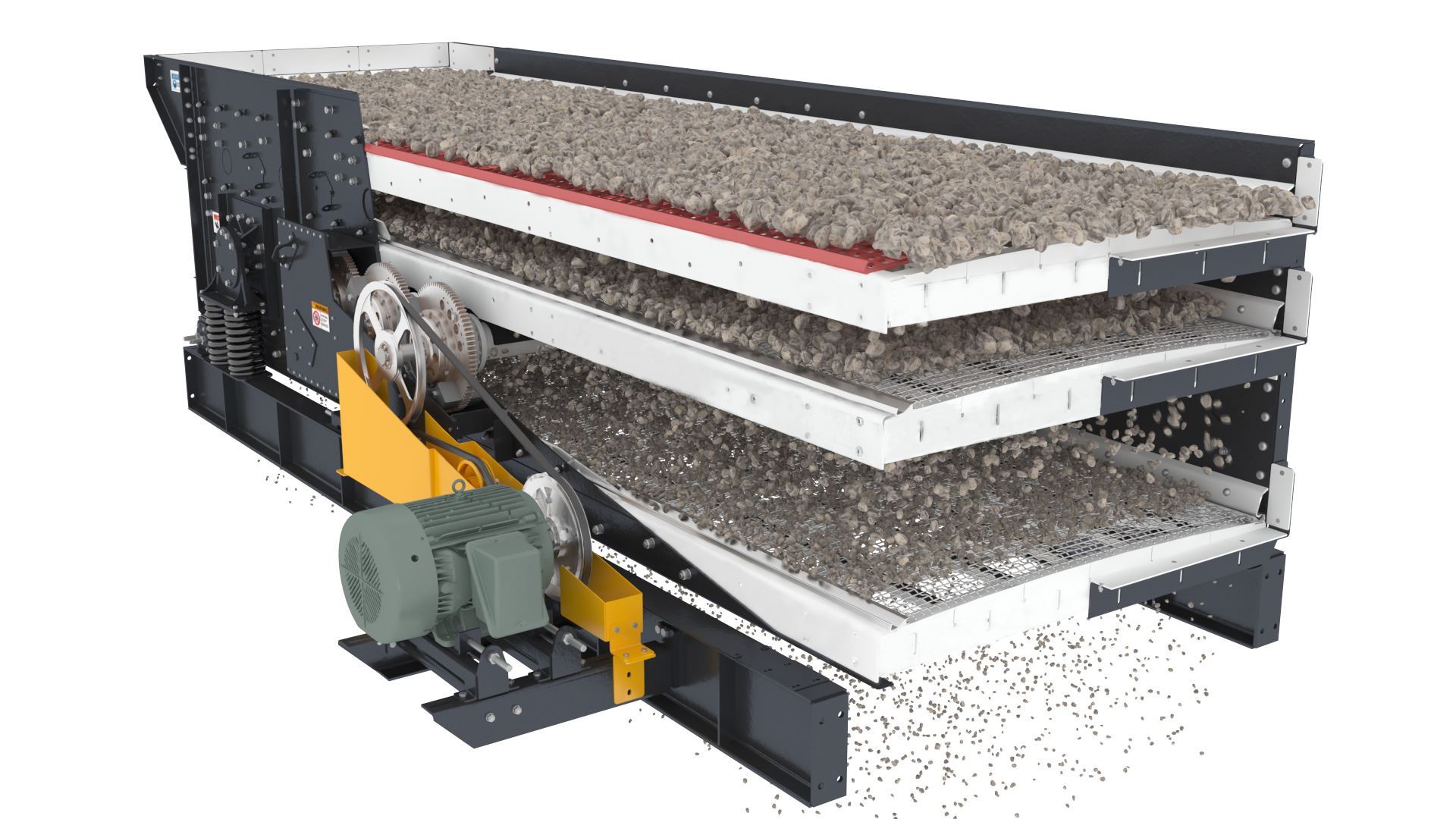
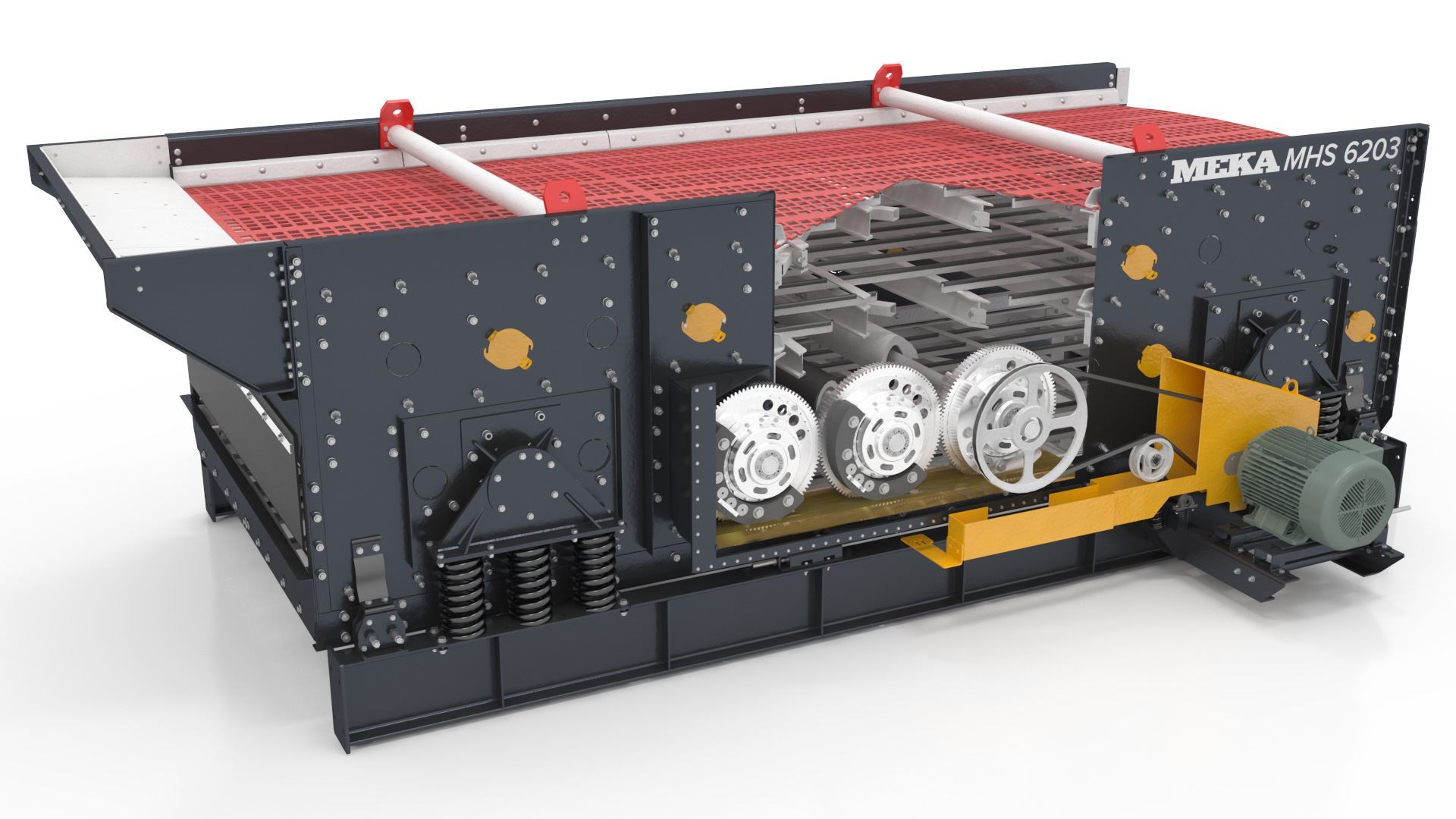
Yatay Elek Nedir?
Birçok farklı endüstride farklı aşamalardaki malzemeleri sınıflandırmak için kullanılan, yatay konumda çalışan eliptik hareketli ve yüksek g-kuvvetli titreşimli tip bir elektir. Uygulamalara bağlı olarak strok uzunluğu, strok açısı ve elek hızı kolay ve hızlı bir şekilde ayarlanabilir.
Yatay Elekler Nasıl Çalışır?
Yatay Elekleri Kullanmanın Avantajları
Yatay Elekler Kullanım Alanları
Hangi Malzemeler Yatay Elekler Kullanılarak İşlenir
- Yatay elekler yüksek kapasite ve eleme verimliliğine sahiptir.
- Yatay elekler, ıslak veya kuru proseslerde çeşitli uygulamalar için uygundur.
- Kompakt tasarım ve yatay konum, hem mobil hem de sabit tesislerde daha düşük yatırım maliyeti sağlar.
- Yatay elekler, ıslak veya kuru proseslerde çeşitli uygulamalar için uygundur.
- Kompakt tasarım ve yatay konum, hem mobil hem de sabit tesislerde daha düşük yatırım maliyeti sağlar.
Yatay elekler, kırılmış agregaların hassas bir şekilde ayrıştırılması gerektiğinde kullanılır. Hassas elemenin tercih edildiği kırma eleme tesislerinde ürün eleği olarak kullanılmakla birlikte kaba elemede de yaygın olarak kullanılmaktadır.
Çalışma hızının yanı sıra, yatay eleklerin strok ve açısı uygulamaya göre ayarlanabilir.
Yatay elekler, ıslak eleme gerektiren en zorlu çalışma koşullarında kullanılabilir.
Yatay elekler cevher hazırlama ve zenginleştirmede, agrega kırma ve eleme tesislerinde, inşaat sektöründe ve malzemelerin boyutlarına göre ayrılmasını gerektiren her sektörde kullanılır.
Çalışma hızının yanı sıra, yatay eleklerin strok ve açısı uygulamaya göre ayarlanabilir.
Yatay elekler, ıslak eleme gerektiren en zorlu çalışma koşullarında kullanılabilir.
Yatay elekler cevher hazırlama ve zenginleştirmede, agrega kırma ve eleme tesislerinde, inşaat sektöründe ve malzemelerin boyutlarına göre ayrılmasını gerektiren her sektörde kullanılır.
Yatay elekler, boyut, elek tipi, göz aralığı ve elek eğiminin yanı sıra titreşimin yönü, frekansı ve genliği doğru seçildiği sürece her türlü malzemeyi ayırmak için kullanılabilir. Islak eleme, nemli ve killi malzemelerin elenmesi içinde kullanılır.
Dünya Genelindeki Projelerimizi Keşfedin
Bizimle İletişimde Kalın
YENİ PROJELERİMİZ VE ÜRÜNLERİMİZ HAKKINDA BİLGİ SAHİBİ OLMAK VE MEKA’DAN HABERLERİ İLK ÖĞRENEN OLMAK İÇİN E-BÜLTEN’İMİZE HEMEN ABONE OLUN!

